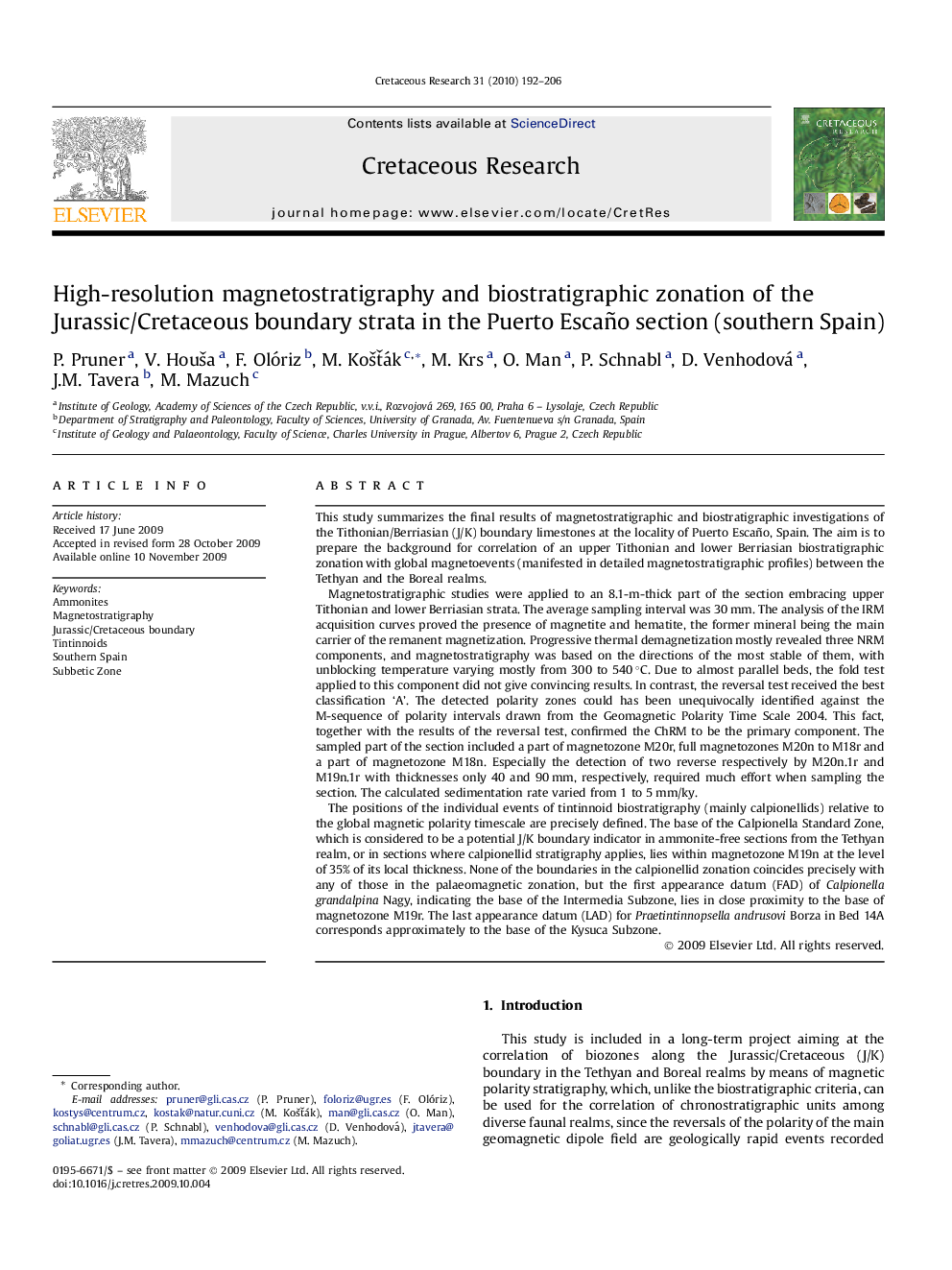| کد مقاله | کد نشریه | سال انتشار | مقاله انگلیسی | نسخه تمام متن |
|---|---|---|---|---|
| 4747506 | 1359918 | 2010 | 15 صفحه PDF | دانلود رایگان |

This study summarizes the final results of magnetostratigraphic and biostratigraphic investigations of the Tithonian/Berriasian (J/K) boundary limestones at the locality of Puerto Escaño, Spain. The aim is to prepare the background for correlation of an upper Tithonian and lower Berriasian biostratigraphic zonation with global magnetoevents (manifested in detailed magnetostratigraphic profiles) between the Tethyan and the Boreal realms.Magnetostratigraphic studies were applied to an 8.1-m-thick part of the section embracing upper Tithonian and lower Berriasian strata. The average sampling interval was 30 mm. The analysis of the IRM acquisition curves proved the presence of magnetite and hematite, the former mineral being the main carrier of the remanent magnetization. Progressive thermal demagnetization mostly revealed three NRM components, and magnetostratigraphy was based on the directions of the most stable of them, with unblocking temperature varying mostly from 300 to 540 °C. Due to almost parallel beds, the fold test applied to this component did not give convincing results. In contrast, the reversal test received the best classification ‘A’. The detected polarity zones could has been unequivocally identified against the M-sequence of polarity intervals drawn from the Geomagnetic Polarity Time Scale 2004. This fact, together with the results of the reversal test, confirmed the ChRM to be the primary component. The sampled part of the section included a part of magnetozone M20r, full magnetozones M20n to M18r and a part of magnetozone M18n. Especially the detection of two reverse respectively by M20n.1r and M19n.1r with thicknesses only 40 and 90 mm, respectively, required much effort when sampling the section. The calculated sedimentation rate varied from 1 to 5 mm/ky.The positions of the individual events of tintinnoid biostratigraphy (mainly calpionellids) relative to the global magnetic polarity timescale are precisely defined. The base of the Calpionella Standard Zone, which is considered to be a potential J/K boundary indicator in ammonite-free sections from the Tethyan realm, or in sections where calpionellid stratigraphy applies, lies within magnetozone M19n at the level of 35% of its local thickness. None of the boundaries in the calpionellid zonation coincides precisely with any of those in the palaeomagnetic zonation, but the first appearance datum (FAD) of Calpionella grandalpina Nagy, indicating the base of the Intermedia Subzone, lies in close proximity to the base of magnetozone M19r. The last appearance datum (LAD) for Praetintinnopsella andrusovi Borza in Bed 14A corresponds approximately to the base of the Kysuca Subzone.
Journal: Cretaceous Research - Volume 31, Issue 2, April 2010, Pages 192–206